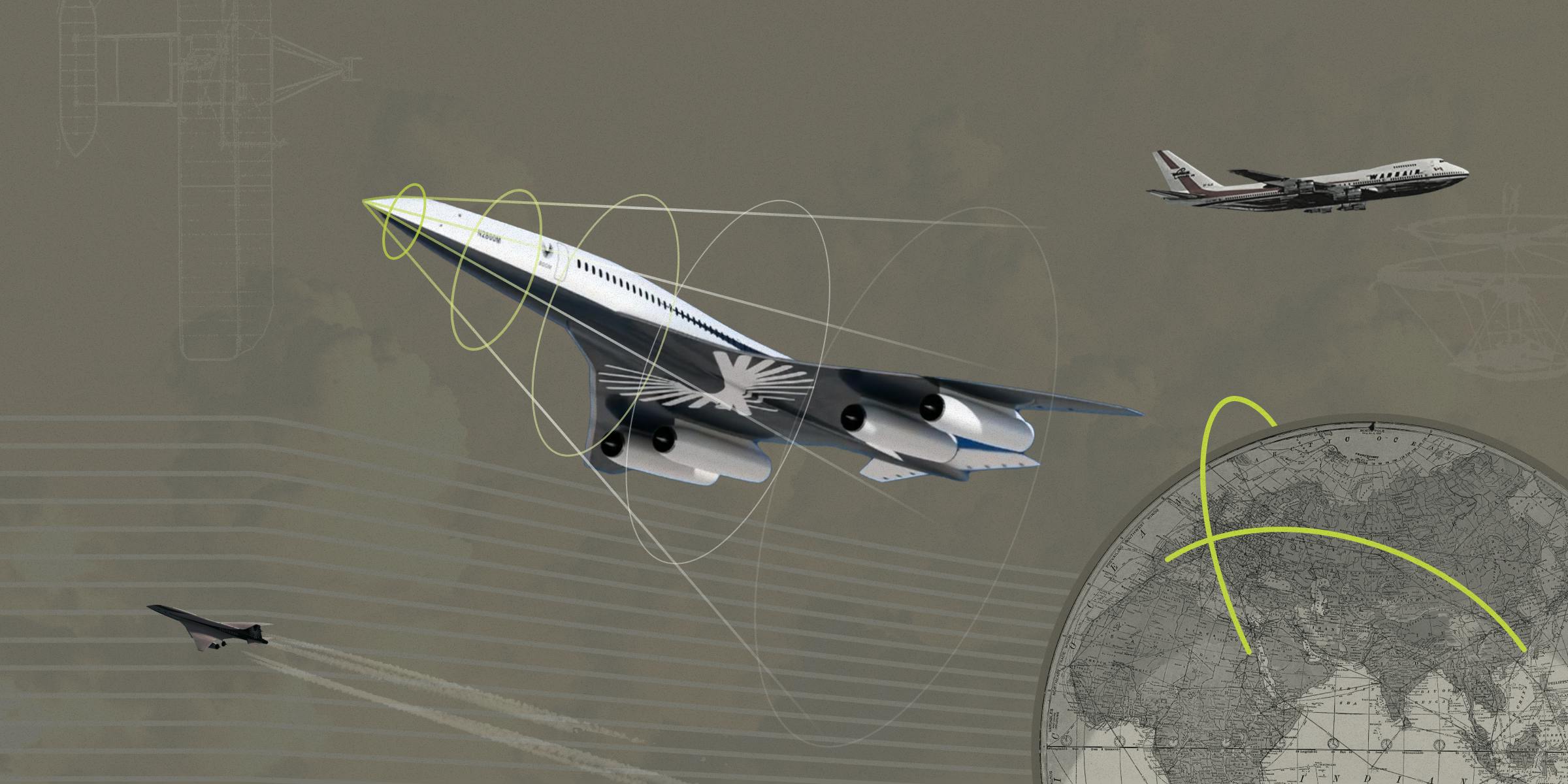Outside of spaceflight, human aviation is one of the most improbable of all human achievements. Seemingly everyone had doubted it, from Lord Kelvin, who wrote “I have not the smallest molecule of faith in aerial navigation” in 1896 to the tireless inventor Thomas Edison himself who said in 1895, “It is apparent to me that the possibilities of the aeroplane … have been exhausted.”
And yet, today, we find ourselves in a world with a global fleet of airplanes in the tens of thousands. Carrying billions of passengers per year, and many billions more pounds in freight, human flight no longer seems a miracle to us, but rather something entirely ordinary.
While the safety and dependability of contemporary commercial air travel are commendable, it’s not at all controversial to say that it leaves much to be desired, certainly when compared to the standards of commercial air travel in the 1950s and 60s, with their standing bars and lobster-course dinner offerings.
Indeed, the greatest question facing the aviation industry today is: why does progress seem to be so difficult to achieve? Why have we seen regression on metrics like speed, altitude, and commercial flight times? Why can’t we continue the legacy of supersonic commercial travel inaugurated by the famed Concorde of the 1970s?
Air travel has become the premier mode of international travel, so it’s high time we uncover the principles upon which this industry was built, and the challenges holding it back today.
The Status of Flight
Each day, American airports accommodate nearly 3 million flying passengers. Over the course of a year, this adds up to nearly a billion customers across America’s 19,000 public and private airports and accounts for 5% of US GDP. Globally, commercial aviation shuttles over 40 billion pounds of freight across the skies every year on a global fleet of over 28,000 aircraft.
Over the past seventy years, air travel has become the backbone of international travel and global commerce. It’s done so all while earning a reputation as the safest mode of travel today by far. Airline accidents have a one-in-a-million probability chance of occurring, far lower than the likelihood of accidents aboard other modes of transportation such as marine vessels, cars, and trains.
And, as push comes to shove, this industry often heavily impacted by the volatile swings in global oil prices, has managed to achieve impressive gains in fuel efficiency over the preceding decades with average fuel consumption of new commercial jet aircraft falling by 50% since 1960.
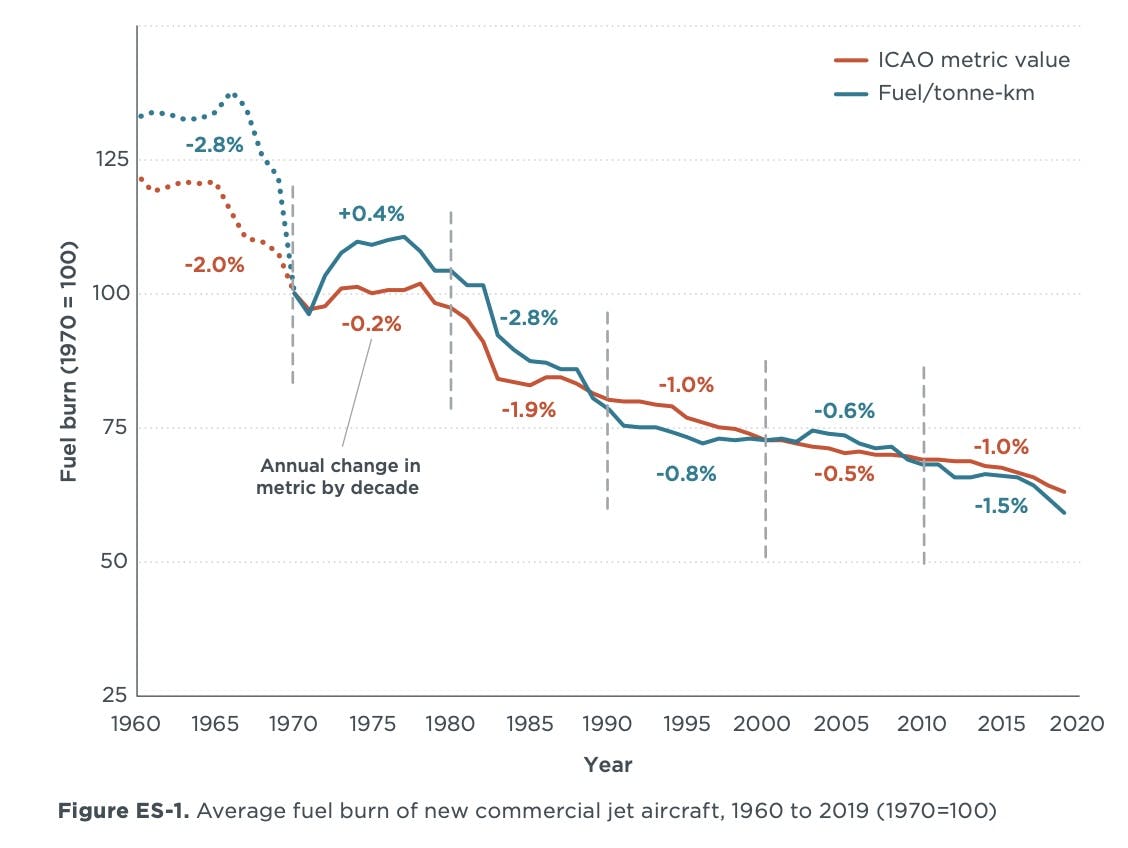
Source: The ICCT
And yet, despite all these impressive statistics, the airline industry has become something of a foil to the lightning pace of advance seen in digital technologies, and even the automobile industry which seems to be electrifying and continuously breaking speed records.
Looked at this way, the airline industry has actually reversed on performance metrics like flight speeds, flight altitudes, and flight times. While no one is rolling 50-year-old automobile models off the assembly line, the same is not true in the airline industry where passenger jets like the Boeing 747, whose production debuted in 1967, were still being actively manufactured until 2023.
The story of the Boeing 747 is actually quite telling since the original plan for this plane was to become relegated to being a freight carrier while passenger air travel migrated to supersonic jets. Instead, supersonic travel was shelved and the Boeing 747 became one of the most popular passenger planes in the world.
Before we get too disheartened with air travel, let’s re-enchant ourselves with the wonders of flight by reviewing all the elements necessary to fly planes.
How Flight Works
Lift
Planes rely on the air around them to fly. That might seem odd since air appears an invisible, ethereal medium. It’s hard to imagine how this substance could keep machines as heavy as planes afloat but in actual fact, it really is the action of the air itself upon the wings of the plane that allows the plane to rise into the air.
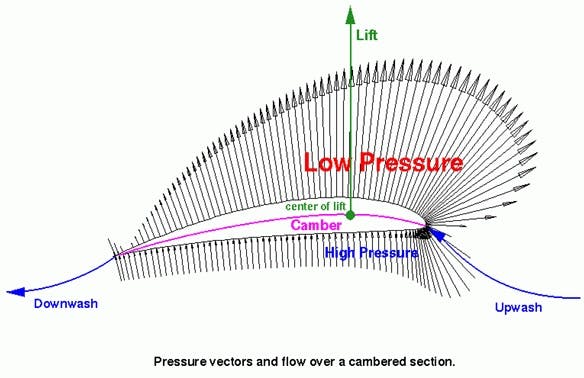
Source: Wiedorn Stuff
The basic explanation of flight states that when an airfoil, like a plane’s wing, moves through the air, a zone of low pressure forms at the top of the object, while a zone of high-pressure forms below it. Air happens to move faster around the curved surfaces of objects, and this increase in velocity results in a decrease in pressure. This zone of low pressure above the wing means the higher pressure beneath it pushes up on the object. As this happens continuously — the object rises into the air and takes flight.
This description is an approximation of what happens to the air around the curved wing of a plane, but it’s very far from complete. One basic reason why this explanation is incomplete is that planes can fly upside down. The explanation initially said that a curved surface is required for the production of lift, but from experience, we know that flat wings, when angled correctly are also capable of inducing lift. What gives?
Well, providing a perfect explanation of the dynamics of fluids like gasses and liquids, is an impossibly difficult and open-ended problem. Though there exists a formula that describes the behavior of fluids through time, called the Navier-Stokes equation, we do not yet have a closed-form solution for this equation. This means that we can’t perfectly predict behavior for all fluids in all cases.
Finding a solution to Navier-Stokes is one of the Millennium Prize problems, a list of unsolved mathematical problems alongside the Riemann hypothesis and resolving whether P = NP. As a result, there’s a lot of disagreement about how exactly the force of lift should be understood, and how exactly to interpret what the air around an airplane wing is doing to keep it in the air.
Thrust
Outside of lift, planes also need the force of thrust. Lift only occurs to objects moving through the air, and therefore cannot be produced by static objects. So, all planes need something capable of propelling them forward. This is where engines come in.
The basic idea of any plane engine, whether a propeller or a gas turbine, is to take in air and accelerate it in the negative direction so that an opposite force is produced to push in the forward direction.
The engine needs to generate just enough thrust to accelerate the plane to a speed where lift will begin to exceed the force of gravity acting on the plane. On smaller and lighter aircraft, this is usually something like 100 km/hr. These planes usually have engines packing anywhere from 150 — 400 horsepower, around the power packed in the average car.
Jetliners, however, require quite a bit more velocity than that. Though each plane model differs in the required speed to achieve takeoff, they typically need somewhere in the ballpark of 250 km/h. The other thing about jetliners is they’re a lot heavier than small propeller planes. The Boeing 787, for instance, can weigh up to 550,000 pounds at takeoff. This means it will need jet engines capable of accelerating this mass to 250 km/h over the length of the runway, which is usually around 3,000 meters.
Doing this requires massive gas turbines, which suck in compressed air and then produce combustion reactions capable of spinning turbines at thousands of rotations per minute. In fact, the gas turbines on planes are not very different from the gas turbines that power natural gas plants. It’s the same mechanism, except on the one hand the turbine spins a big fan to suck in air, and on the other, the turbine spins a generator to produce electricity. Airplanes are like miniature power plants producing enough energy to fly passengers to their final destinations.
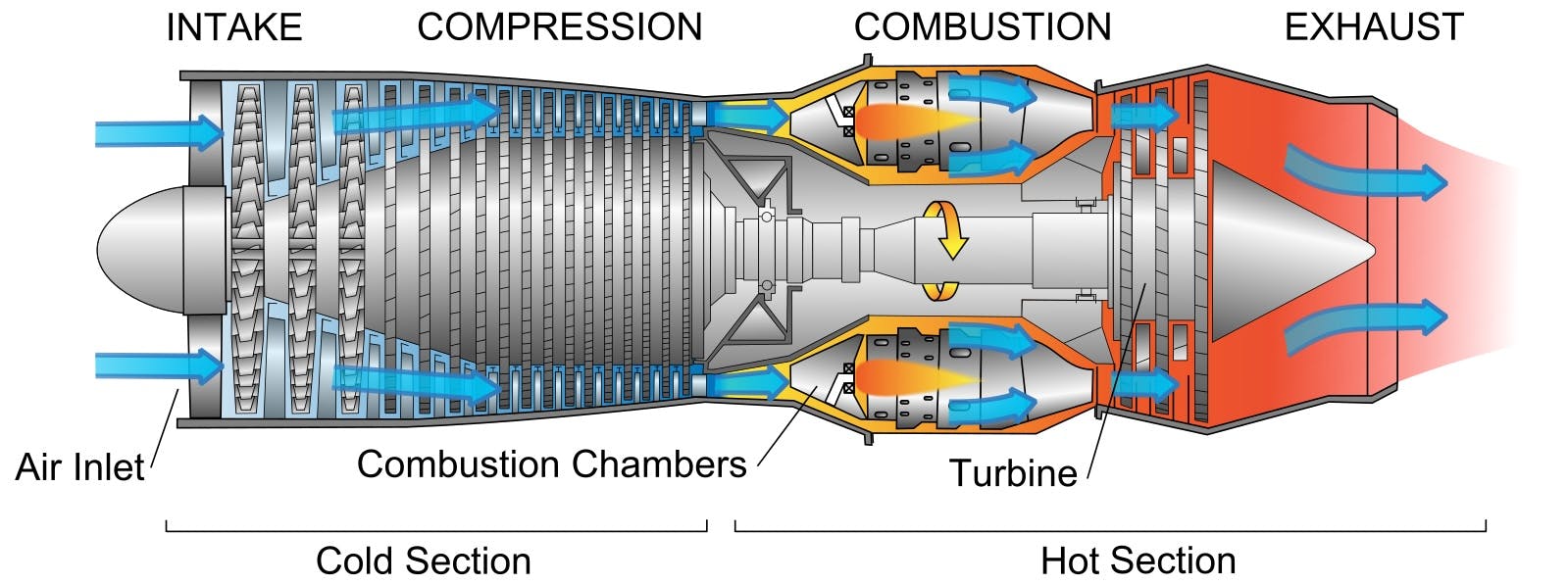
Source: Aviation Stack Exchange
The Boeing 787, in particular, is equipped with two GEnx engines, collectively capable of producing around 600 kN of thrust. They do this by sucking in 1.2 tons of air every second. However, only one-ninth of the air taken in is used in combustion to spin the engine’s giant turbines. The rest of the air sucked in is compressed and expelled to increase the plane’s thrust, just like in a propeller.
It’s this sucking ability of the plane, or its maximum thrust output, that determines how high it can fly. Lift is determined by how much low-pressure air is going over the top of the wing, however, at higher altitudes, the air is thinner, so there’s just less air in general. To compensate for this, the plane will need to move faster and faster through the air. With powerful enough engines, commercial airlines can generate enough speed to reach about 42,000 feet.
Drag
The countervailing force of thrust is drag. If thrust is the force pushing the aircraft forward, drag is the restraining force acting upon the aircraft. Drag is air resistance, which means it’s an entirely aerodynamic phenomenon, whose behavior is modeled by fluid dynamics.
Drag acts on every object moving through a fluid, whether that be a swimmer in the water, a race car on an F1 track, or bicyclists in the Tour de France. The only place that drag doesn’t exist is in space, which is why the aerodynamics of spaceships don’t matter very much once they’re up there. However, here on Earth, everyone wanting to move fast always wants to minimize drag.
On an airplane, there are two primary sources of drag. The first is a collection of phenomena known as parasitic drag. The greater the surface area of the plane, the greater the drag. The larger the nose of the plane pushing up against the air in front of it, the greater the drag. The more elements on the surface of the plane that cause interfering air patterns, the greater the drag. Mitigating these effects is achieved through aerodynamic design, paying careful attention to the shape of the plane, and how air patterns flow around it.
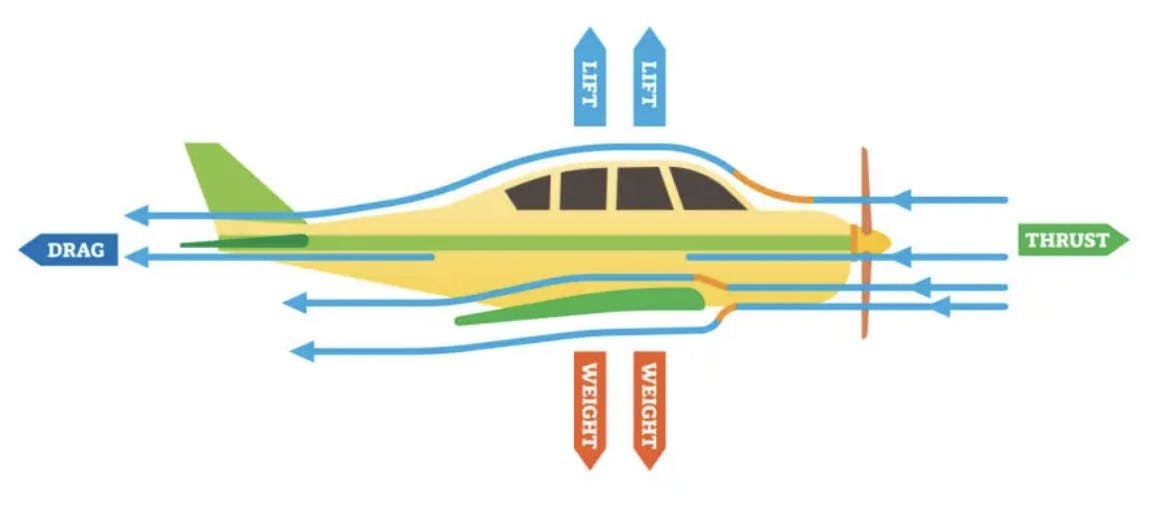
Source: iStock
The second major source of drag is called induced drag, and it’s directly a consequence of the lift force. That area of higher pressure air which pushes the plane up, always wants to dissipate into the region of lower pressure on the top of the plane wings. This movement of air creates vortices around the wings which slow the plane’s forward motion as it climbs higher. Completely avoiding induced drag is impossible, but wing tips that make it harder for the higher-pressure air to travel to the top of the plane can mitigate induced drag somewhat.
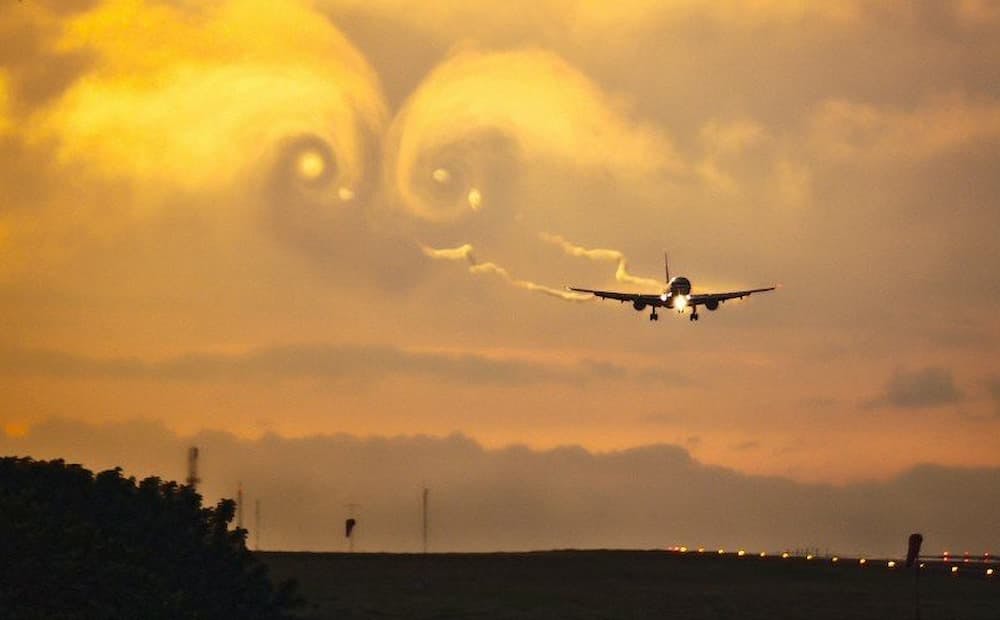
Source: Wing tip vortices generated by induced drag, Bold Method
Advising on the shape of the plane is the task of the aerodynamicist, who must consider the impact of all these forces in the design of the aircraft. To do this, plane components are placed inside wind tunnels which demonstrate how airflow will curl around the parts. Computational fluid dynamics helps simulate the flow of air around components. However, as we’ve seen, arriving at a perfect understanding of how airflow will interact with airplane components is simply not possible, which is why it’s similarly not possible to deduce an optimal aerodynamic shape. There’s still a lot of mystery involved here which makes aerodynamic design more of an art than a science.
Landing
Landing is the phase of flight where an aircraft transitions from flight to ground, requiring precise management of several aerodynamic forces. It involves balancing speed, altitude, and descent rate to ensure a smooth touchdown. Too much speed can lead to overshooting the runway, while too little may cause the aircraft to stall. Pilots rely on systems like the Instrument Landing System (ILS) and, in some cases, autoland features, but human oversight remains crucial, especially when adjusting for unexpected variables such as wind shear or sudden weather changes.
The process begins during the final approach, where the aircraft descends on a glide path, typically at an angle of about 3 degrees relative to the ground. The goal is to maintain a steady descent rate, usually around 700 feet per minute, while carefully managing the angle of attack to avoid stalling.
As the aircraft approaches the runway, the pilots gradually reduce thrust to slow down the aircraft. The objective is to reach the reference landing speed, which is typically set just above the aircraft's stall speed for safety. This speed is carefully monitored to ensure the aircraft remains above the stall threshold while being slow enough for a controlled landing.
Just before touchdown, the pilots increase the nose pitch slightly to reduce the descent rate in a flare maneuver, effectively transitioning from a steep descent to a more level approach. This move helps to reduce the vertical speed of the aircraft, allowing the main landing gear to make contact with the runway first, followed by the nose gear.
Once the aircraft touches down, ground spoilers deploy to disrupt lift, transferring the aircraft's weight onto the wheels for better braking efficiency. Simultaneously, reverse thrust is often engaged, redirecting engine thrust forward to help slow the aircraft. The brakes are then applied, typically using an anti-skid system to prevent the wheels from locking up, moving from a safe deceleration to a complete stop.

Source: ResearchGate
This barely scratches the surface of airplane design. Plane designers also need to consider the structural stresses the plane will bear as it repeatedly ascends and descends from high altitudes. This has implications on everything from how the fuselage will be designed, wherein fuel will repeatedly expand and contract, to the types of materials used in the construction of the plane.

Source: Flight Global
Even seemingly trivial considerations like the design of windows can have a huge impact on a plane’s structural integrity. In 1954, the first commercial jet, the de Havilland Comet 1 Aircraft, designed with square windows experienced an in-flight breakup as repeated stress around the window corners contributed to metal fatigue. Since then, oval windows have become the norm.
In addition to this are all the systems that keep the air cabin pressurized, on-board cooling systems, and much more. The average commercial airliner today has four million parts. Each one will travel over 52,000,000 miles over the course of its life before retiring. That’s like 100 trips to the moon and back, or 2,000 trips around the Earth.
Though the future of flight may seem to have hit pause in recent years, it’s still worth noting the stunning achievements devised by the enterprise of modern aviation.
The History of Flight
The first-ever flight was not attempted by humans, but actually a sheep, a cockerel, and a duck. The spectacle took place at the Royal Palace in Versailles, in 1783, attended by none other than the king and queen, Louis XVI and Marie Antoinette. The aircraft in question was one of the first hot air balloons ever produced.
Its architects were the Montgolfier brothers, who, in the previous year, noticed how fabric, when filled with heated air, had a tendency to inflate and fly upwards. They tested this phenomenon by sewing makeshift balloons out of cloth, fishing nets, and buttons. They were shocked when their homemade balloons were able to reach altitudes of up to two kilometers.
Because it wasn’t tested, for the first official demonstration of their contraption before French royalty, they would give the first opportunity to a lot of farm animals. After 8 minutes in the air, all three animals survived, and flying was open for business.
By the 19th century, lighter-than-air flight exploded. Hot air balloons were used in reconnaissance missions by the Union Army in the Civil War. Air ships, retrofitted with steers and everything from steam to electric engines were soon introduced, and before long lighter-than-air vehicles were flying circles around the Eiffel Tower itself.
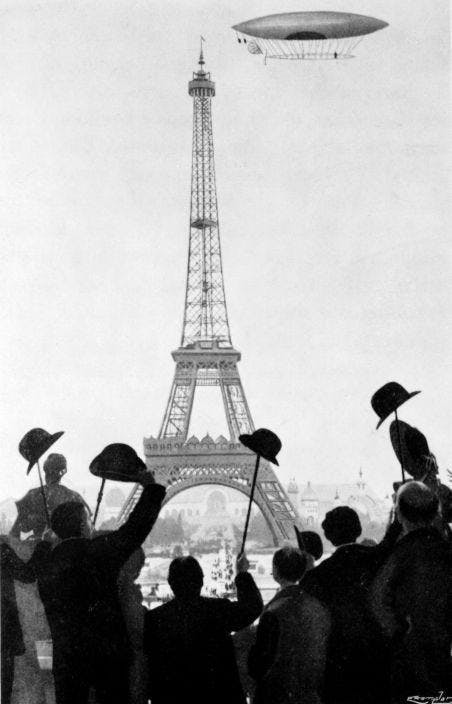
Source: National Archief
In the decades that followed, blimps filled with helium and solid framed zeppelins filled the skies but the lofty goal of heavier-than-air flight still seemed out of reach.
On October 9th, 1903 the New York Times wrote that “the flying machine which will really fly might be evolved by the combined and continuous efforts of mathematicians and mechanicians in from one million to ten million years — provided, of course, we can meanwhile eliminate such little drawbacks and embarrassments as the existing relation between weight and strength in inorganic materials. No doubt the problem has attractions for those it interests, but to the ordinary man it would seem as if effort might be employed more profitably.”
It’s a little comical that on December 7th, 1903, only sixty-three days later, the Wright brothers succeeded in building just such a flying machine.
The Wright brothers were bicycle makers. They had the clever idea of substituting sprockets that normally power wheels to sprockets capable of turning two propellers. Their Wright Flyer, built entirely out of spruce wood, became the first piloted engine-powered plane. It flew a distance of only 120 feet, but the Wright Flyer II was capable of doing laps around the fields of their hometown in Dayton, Ohio. Ahead of the First World War, the US Army Signal Corps purchased the 1909 Wright Military Flyer from the Wright Company in an effort to build out its own Air Force.
It’s remarkable that within just twenty years of the Wright brothers succeeding at building the first flying machine, commercial aviation was already being born. KLM was inaugurated in 1917 and Pan Am, started just ten years later, began offering regularly scheduled commercial flights.
In the decades that followed, engineers attempted to put ever more powerful engines on planes. In 1928, German engineer Alexander Lippisch made a rocket-powered aircraft, and just ten years later, the first-ever jet engine, featured on the Heinkel He 178, was born.
From then on, jets were continuously breaking speed records. It started with American Chuck Yeager, who was the first to break the sound barrier in 1947 aboard the Bell X-1, and concluded with the SR-71, which, in 1976, became the fastest jet in history when it reached a sustained speed of Mach 3.3, or 2,193 miles per hour.
The only issue is, as of 2023, that record is still intact.
The Future of Air Travel
Going Supersonic?
A big question for observers of the aviation industry is when we might see a return to supersonic commercial air travel. The Concorde, which took its first flight in 1969, could fly at Mach 2, or 1,350 miles per hour. It was capable of flying passengers from London to New York in under three hours.
However, an unfortunate side effect of its speed was the incredibly loud sonic boom it produced, audible to any and all below it. You can listen to what that might sound like here, and consider whether you would trade residential quiet for supersonic travel speeds. Within a few years of the Concorde taking flight, campaigns all across America and Europe raged demanding that airlines quiet the boom, which many considered jarring.
In 1973, the Federal Aviation Administration banned supersonic flights over land in America, and other nations quickly followed suit. This meant that the only flight paths available to the Concorde were across the Atlantic Ocean. This limited scope eventually proved economically infeasible and by 2003, the Concorde was discontinued and the age of supersonic civilian air travel came to a close.
That is … until 2021 when United Airlines agreed to buy 15 supersonic jet airlines from Boom Supersonic, a Denver-based startup based attempting to revive supersonic air travel for pan-oceanic flight paths.

Source: Boom Supersonic
At the time, the development seemed exciting. Rolls Royce had agreed to collaborate with Boom Supersonic on the production of a novel engine capable of propelling a 65-85 passenger aircraft flying at supersonic speeds. Conventional turbofan engines with high air bypass ratios, used on commercial aircraft, are not optimized for supersonic flight. In the first place, their large diameter which helps suck in more air would produce way too much drag during supersonic flight, and in the second place, the relatively slow air coming out the back would actually slow the plane down. Instead, the Concorde used pure turbojets which combusted all the air they took in and expelled it as thrust. However, by today’s standards, using the same technique would be rather fuel-inefficient and contribute to an incredibly high cost of travel.
Thus, the pressing need to develop a new, better engine. Unfortunately, in 2022, Rolls Royce departed from the Boom Supersonic program after a few years of consulting with them, while all other prominent engine makers also declined to take their place. Since then, Boom Supersonic has partnered with Florida Turbine Technologies to help it produce the 15 jets expected by United Airlines by 2029.
Boom Supersonic is not the only startup that has faced difficulty on the road to supersonic travel. In 2021, Aerion, one of three startups working on civilian supersonic travel ceased operations due to financial concerns in a rather foreboding omen.
However, there is still another organization working on improving supersonic planes — NASA. Working with Lockheed Martin, it has produced the X-59, a single-pilot supersonic aircraft. The goal is to quiet the boom. The plane first took flight in 2023, and between 2023 and 2025, the plane will be flying over select American cities, surveying residents on whether the noise level is acceptable. Still, the X-59’s engine will not be adequate for a commercial plane, and even if it succeeds, more work will be required to scale it for commercial purposes.
Can Military Aircraft Help?
In general, designing aircraft for commercial air travel is an exceedingly difficult task. Firstly, everything must be scaled up, and the planes need to conform to extremely rigorous safety tests. It’s this caution that has arguably contributed to the conservative and unchanged appearance of commercial planes for decades, while also securing the safety and reliability we can enjoy on airplanes today.
However, outside the civilian sector, military aircraft have seen some fascinating experimentation with aircraft and engine design. For one thing, military aircraft, like the F-35B, can be incredibly impressive. The F-35B, for example, is powered by a gimbaled after-burning turbofan engine. This engine can swivel to lift the aircraft vertically — like a rocket — or horizontally, like a traditional plane. Remarkably, even the F-35B, arguably the most sophisticated stealth bomber around today, is still only half as fast as the now-retired SR-71 was in 1976.
Beyond this, the structural design of military planes is very different from conventional planes. Many employ a blended wing model, like the B2 bomber. To increase fuel efficiency, these models entirely get rid of the tail, which adds surface area and therefore creates drag.
By some estimates, if commercial aircraft could redesign their bodies to remove the tail, they could decrease fuel consumption by something like 27%. If done across the board, that could mean annual fossil fuel savings in the tens of billions of gallons. Airbus is working on producing feasible designs of such blended wing models for civilian aircraft. However, porting this model from the military to the civilian context comes with a number of challenges.
One of the challenges is the simple fact that removing the tail, though it makes the plane more fuel efficient, also makes it less stable under turbulence. Fighter pilots are trained extensively to deal with this. However, commercial pilots who are trained to fly exclusively on the tube and wing model of a plane would need complete retraining. To compensate for the decreased stability, planes like the B2 have more correcting features that kick in to regulate the plane. However, these also become points of failures that would decrease the safety of this model relative to traditional tube and wing models with passively regulating balance systems.
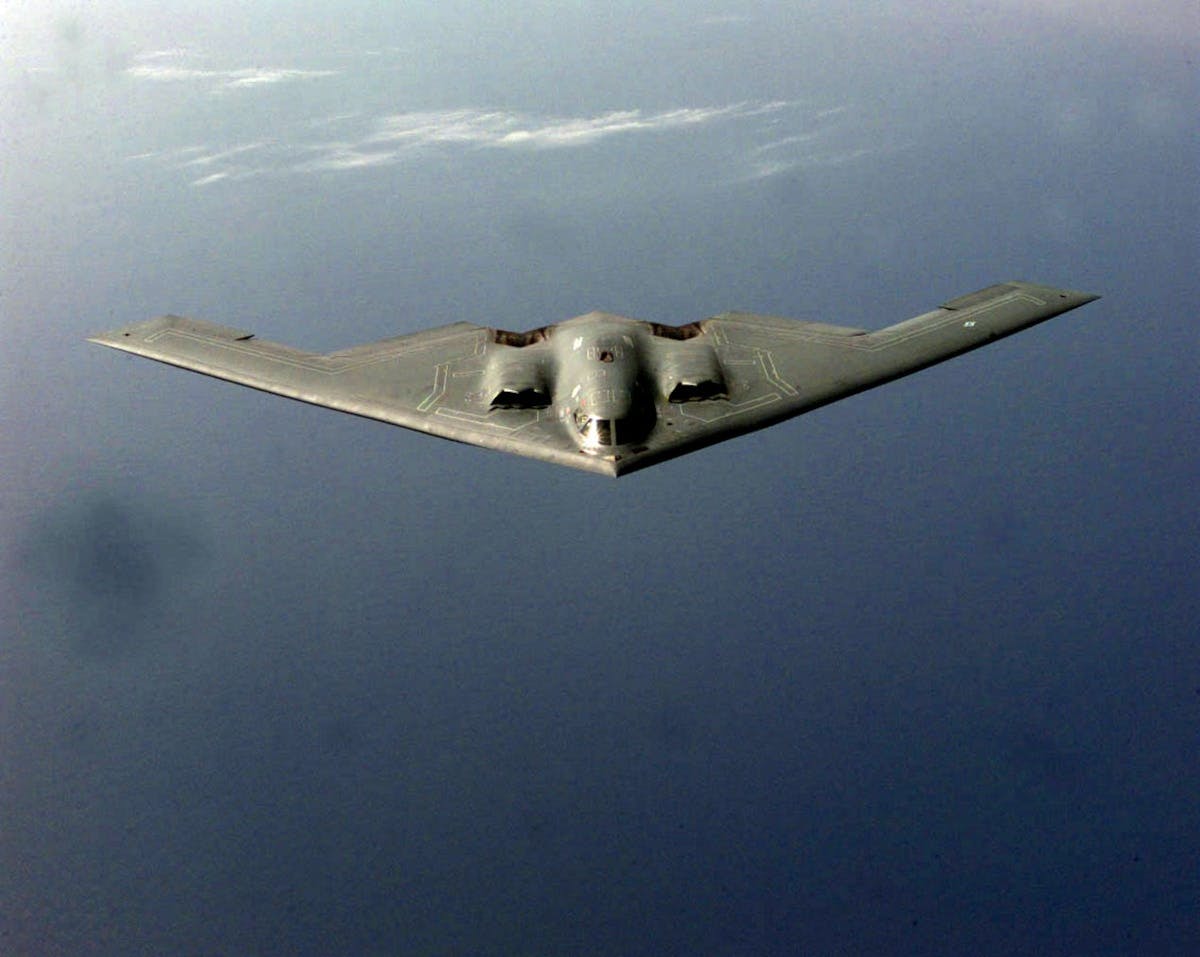
Source: Air Force
Aviation Industry Trends
Of course, there are many other exciting ideas in aircraft engineering floating around from electric to hydrogen-fueled air travel. Unfortunately, none of these come without their respective trade-offs, and many are still far from feasible. There are still groups like the US Air Force hoping to design hypersonic planes capable of traveling at Mach 5, a speed never before reached. Achieving this milestone would be a massive win for the aviation industry, even if just on the military side. Though it might take a couple more years to break new technological barriers in air travel, the bright side is that we can know for certain it won’t take a million.
Disclosure: Nothing presented within this article is intended to constitute legal, business, investment or tax advice, and under no circumstances should any information provided herein be used or considered as an offer to sell or a solicitation of an offer to buy an interest in any investment fund managed by Contrary LLC (“Contrary”) nor does such information constitute an offer to provide investment advisory services. Information provided reflects Contrary’s views as of a time, whereby such views are subject to change at any point and Contrary shall not be obligated to provide notice of any change. Companies mentioned in this article may be a representative sample of portfolio companies in which Contrary has invested in which the author believes such companies fit the objective criteria stated in commentary, which do not reflect all investments made by Contrary. No assumptions should be made that investments listed above were or will be profitable. Due to various risks and uncertainties, actual events, results or the actual experience may differ materially from those reflected or contemplated in these statements. Nothing contained in this article may be relied upon as a guarantee or assurance as to the future success of any particular company. Past performance is not indicative of future results. A list of investments made by Contrary (excluding investments for which the issuer has not provided permission for Contrary to disclose publicly, Fund of Fund investments and investments in which total invested capital is no more than $50,000) is available at www.contrary.com/investments.
Certain information contained in here has been obtained from third-party sources, including from portfolio companies of funds managed by Contrary. While taken from sources believed to be reliable, Contrary has not independently verified such information and makes no representations about the enduring accuracy of the information or its appropriateness for a given situation. Charts and graphs provided within are for informational purposes solely and should not be relied upon when making any investment decision. Please see www.contrary.com/legal for additional important information.

